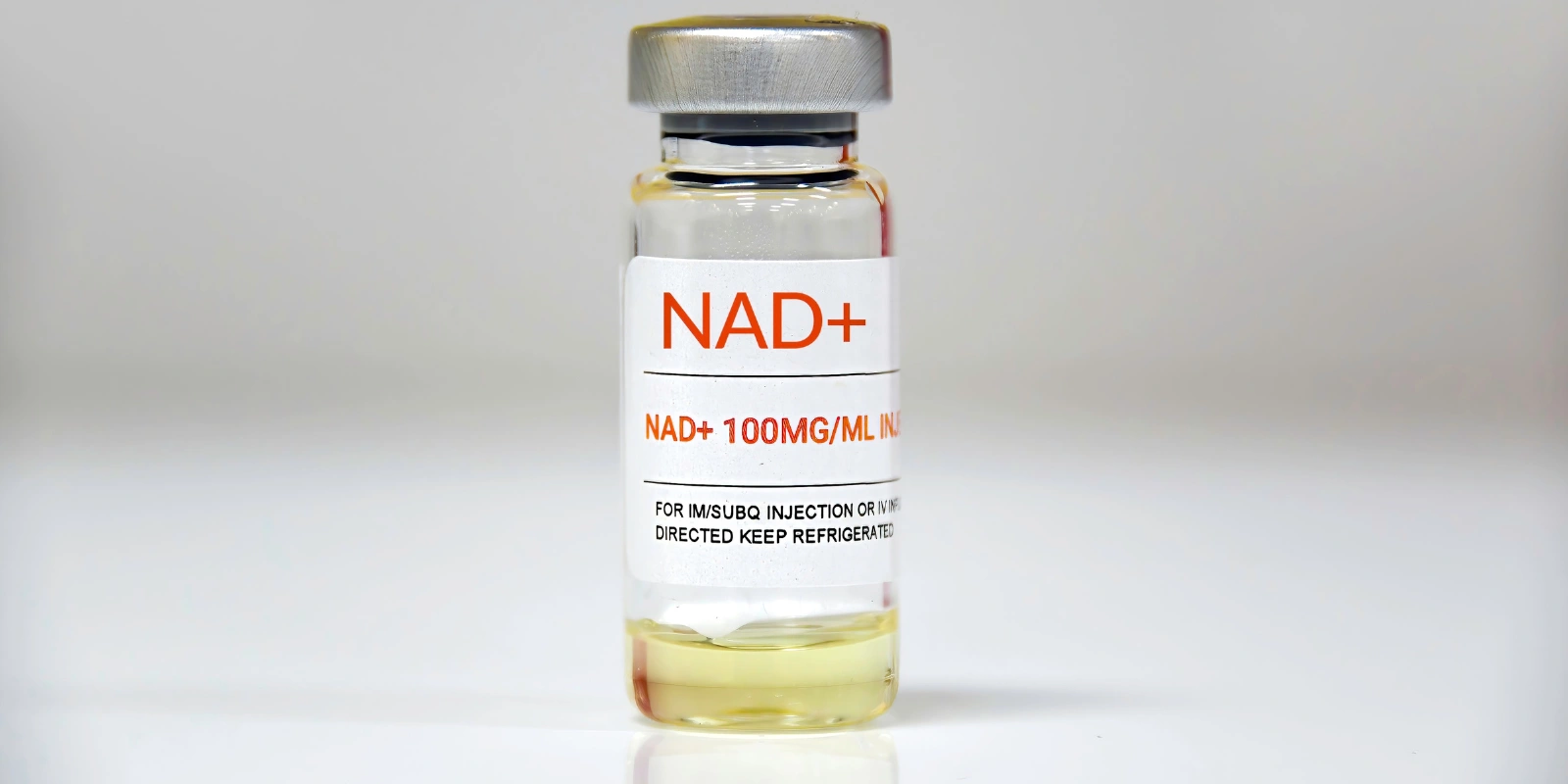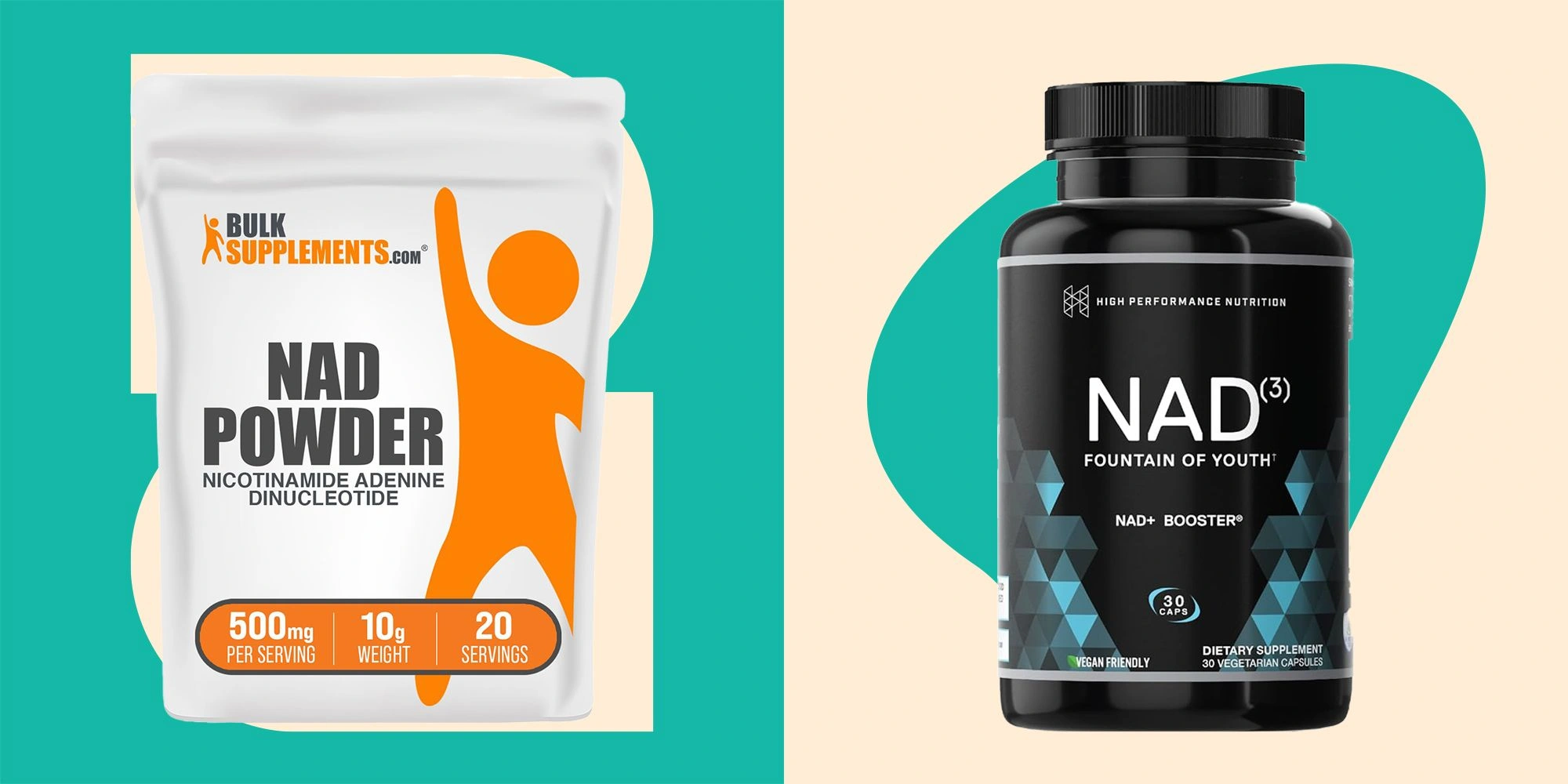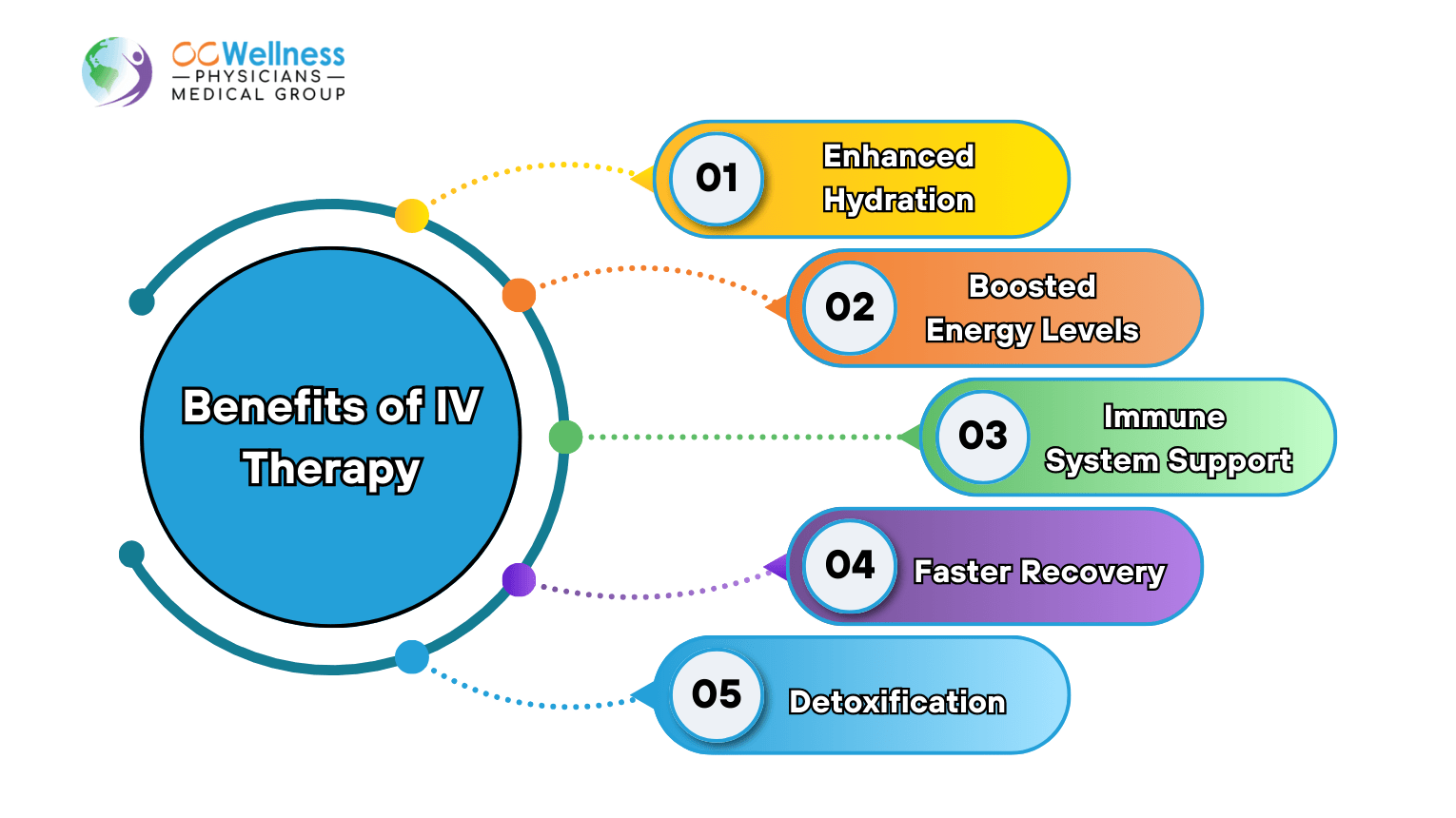Introduction: NAD+ IV Therapy Benefits — A Complete Guide to Anti-Aging Therapy
For centuries, people have searched for the elusive “fountain of youth.” While reversing chronological age remains science fiction, modern research shows that it is very possible to reduce your metabolic age—the true marker of biological wear and tear. A 30-year-old and a 50-year-old might share the same number on their birthday cakes, but internally, they could be decades apart in health.1
That’s where NAD+ IV therapy comes in. Short for nicotinamide adenine dinucleotide, NAD+ is a coenzyme found in every living cell and is fundamental to processes like energy production, DNA repair, and maintaining cellular health. But here’s the catch: NAD+ levels decline as we age. This decline is now understood as a core factor in aging and disease development.2
This guide explores what NAD+ is, how it works, and why IV therapy might be the most powerful way to restore it. From improving cognitive function to enhancing metabolism, the benefits are wide-reaching—and supported by an ever-growing body of scientific evidence.
What Is NAD+ and How Does It Work?
 NAD+ is a vitamin-like molecule structurally similar to vitamin B3 (niacin). The body synthesizes it from niacin or the amino acid tryptophan. It exists in three primary cellular compartments: the cytoplasm, mitochondria, and nucleus—each essential to energy production and healthy aging.3
NAD+ is a vitamin-like molecule structurally similar to vitamin B3 (niacin). The body synthesizes it from niacin or the amino acid tryptophan. It exists in three primary cellular compartments: the cytoplasm, mitochondria, and nucleus—each essential to energy production and healthy aging.3
In these compartments, NAD+ supports critical processes:
- ATP production: The body’s energy is made in the mitochondria, and NAD+ helps convert nutrients into usable fuel (ATP) by carrying electrons in the electron transport chain.3
- Antioxidant protection: NAD+ converts into NADP+ and NADPH, helping defend against oxidative stress.3
- DNA repair & cell survival: It fuels enzymes like PARPs and sirtuins—key regulators of aging, inflammation, and DNA integrity.3
Simply put: without NAD+, our cells can’t survive, let alone thrive. Unfortunately, age-related NAD+ decline impairs these vital systems. That’s why scientists are increasingly turning to NAD+ IV therapy as a way to replenish levels and slow down the clock.
The Anti-Aging Effects of NAD+
Aging was once seen as inevitable, but that paradigm is shifting. In fact, in 2018, the World Health Organization classified aging as a disease in the ICD-11, which opens the door to proactive treatments.5–7 One of the most promising? NAD+ IV therapy.
Aging is marked by a drop in basal metabolic rate (BMR), typically by 1–2% every decade. This contributes to muscle loss, bone fragility, fat accumulation, and metabolic disorders.4 NAD+ helps reverse this by:
- Reviving energy production
- Activating longevity proteins (sirtuins)
- Enhancing DNA repair
Sirtuins are proteins nicknamed “longevity regulators.” They help silence genes involved in inflammation and cellular stress. NAD+ directly fuels these proteins, helping the body manage aging at the genetic level.8
PARPs, on the other hand, help repair DNA and regulate mitochondrial function—another process that falters with age. NAD+ ensures PARPs work efficiently to prevent early cell death.9
Meanwhile, CD38 proteins, which influence immune health and inflammation, are also regulated by NAD+.9 In short, NAD+ is a master regulator of healthy aging—and maintaining its levels can make a real difference in metabolic age.
NAD+ for Energy Production and Mitochondrial Support
 Do you feel tired all the time? You’re not alone. Chronic fatigue is a hallmark of aging and is often tied to impaired tryptophan metabolism and NAD+ deficiency.10
Do you feel tired all the time? You’re not alone. Chronic fatigue is a hallmark of aging and is often tied to impaired tryptophan metabolism and NAD+ deficiency.10
NAD+ supports the mitochondria—the “power plants” of cells—and helps maximize ATP output. This benefit has real-world applications:
- Parkinson’s disease: Patients often suffer from muscle fatigue due to poor mitochondrial function. NAD+ levels are consistently lower in these individuals.11
- Post-viral fatigue: After infections like COVID-19, many experience lingering fatigue and poor immune function—both of which are tied to mitochondrial stress.12
NAD+ therapy may help restore vitality in these scenarios by improving mitochondrial health and enhancing the body’s ability to produce clean energy.13
NAD+ and DNA Repair: Protecting the Genome
DNA damage accumulates with age and is a known contributor to cancer, neurodegenerative disorders, and general aging. PARPs and sirtuins are two enzyme families responsible for detecting and repairing this damage—but they rely heavily on NAD+.14
Animal studies confirm that restoring NAD+ improves DNA repair, increases lifespan, and enhances quality of life.15 From mice to worms, organisms with boosted NAD+ levels live longer and healthier.
Enhancing Cellular Respiration
Cellular respiration is the body’s engine. It’s how we turn food into energy. And NAD+ is the key ignition.
Mitochondria hold the highest concentrations of NAD+. Here, NAD+ not only fuels ATP production but also prevents oxidative damage, promoting cell survival.16
Some cutting-edge applications of NAD+ IV therapy include:
- Stroke recovery: NAD+ may help limit brain damage after ischemic strokes.17
- Heart health: It can boost the survival of heart cells after a heart attack.18
These potential benefits demonstrate how vital NAD+ is for cell resilience, especially under stress.
Improving Metabolism and Weight Management
Boosting ATP isn’t the only metabolic benefit of NAD+.
This molecule also helps regulate blood sugar, cholesterol, and fat metabolism. Lifestyle interventions like the ketogenic diet have shown they work in part by enhancing NAD+ levels.19,20
In other words, NAD+ IV therapy may:
- Support weight loss
- Improve insulin sensitivity
- Reduce the risk of type 2 diabetes
Neuroprotection: Guarding the Brain
Our brains consume 20% of the body’s energy despite making up just 2% of its weight.21 Aging, stroke, and neurodegenerative diseases like Alzheimer’s and Parkinson’s drain this energy—and NAD+ deficiency plays a role.15
Studies suggest that boosting NAD+ can:
- Reduce neuronal death post-stroke21
- Support dopamine neurons in Parkinson’s disease22
- Improve memory, learning, and synaptic function in Alzheimer’s23
The research is promising, with more human trials on the way.
Enhancing Memory, Focus, and Cognition
Fatigue isn’t the only brain issue linked to NAD+ loss. Cognitive decline, memory lapses, and poor focus often result from sluggish mitochondria.
In animal models, NAD+ has been shown to:
- Improve learning and memory25
- Boost brain energy supply
- Support mood and mental clarity
By enhancing the brain’s energy economy, NAD+ IV therapy could help you think more clearly and feel mentally sharper.
Immune Support and Inflammation Control
Aging brings immunosenescence—reduced immune function—and chronic inflammation. NAD+ modulates immune proteins like CD38 to help maintain balance.26,27
Benefits may include:
- Enhanced immune surveillance
- Reduced inflammation
- Lower cancer risk
Whether you want to ward off infections or simply feel more resilient, NAD+ plays a key role in immune system health.
Heart and Muscle Health
The heart is a tireless organ that depends on high ATP production. NAD+ ensures heart muscle cells stay energized and resilient.28
Its benefits include:
- Protection from oxidative stress
- Prevention of heart failure
- Improved cardiac recovery after ischemia29
Regular NAD+ infusions may help maintain a youthful, efficient cardiovascular system.30
Why IV Therapy? The Unique Advantage
 NAD+ cannot be effectively absorbed via oral supplements. It degrades in the digestive tract, making IV delivery the most reliable and potent method.
NAD+ cannot be effectively absorbed via oral supplements. It degrades in the digestive tract, making IV delivery the most reliable and potent method.
Advantages of IV NAD+ therapy:
- Immediate effect: Direct bloodstream absorption for fast results
- Higher doses: Achieve therapeutic levels not possible through oral intake
- Better outcomes: Useful for patients with advanced fatigue or neurodegeneration
IV therapy isn’t just about convenience—it’s about achieving results that oral supplements can’t match.
Conclusion: Is NAD+ IV Therapy Right for You?
NAD+ IV therapy is more than a wellness trend—it’s a science-backed strategy for healthy aging. From energy production to DNA repair, cognitive function, and immunity, NAD+ is deeply involved in nearly every cellular process.
By replenishing what age takes away, NAD+ therapy offers a potential roadmap for living longer, stronger, and sharper.
While more clinical trials are underway, existing evidence points toward powerful benefits—especially for those experiencing early signs of aging, chronic fatigue, or cognitive decline.
For anyone ready to invest in their long-term vitality, NAD+ IV therapy could be a powerful ally.
References
- Hertel J, et al. J Proteome Res. 2016;15(2):400–410.
- Bogan KL, Brenner C. Annu Rev Nutr. 2008;28:115–130.
- Covarrubias AJ, et al. Nat Rev Mol Cell Biol. 2021;22(2):119–141.
- Vásquez-Alvarez S, et al. High Blood Press Cardiovasc Prev. 2021;28(3):263–270.
- Shade C. Integr Med (Encinitas). 2020;19(1):12–14.
- Zhavoronkov A, Bhullar B. Front Genet. 2015;6.
- The Lancet Healthy Longevity. 2022;3(7):e448.
- Huang T. Am J Biomed Sci & Res. 2019;6(5).
- Aman Y, et al. Transl Med Aging. 2018;2:30–37.
- Dehhaghi M, et al. Aging Dis. 2022;13(3):698.
- Mischley LK, et al. Nutrients. 2023;15(4):943.
- Block T, Kuo J. Clin Med Insights Pathol. 2022;15.
- Cantó C, et al. Cell Metab. 2015;22(1):31–53.
- Croteau DL, et al. Cell Cycle. 2017;16(6):491–492.
- Fang EF, et al. Cell Metab. 2016;24(4):566–581.
- Du L, et al. J Biol Chem. 2003;278(20):18426–18433.
- Khoury N, et al. Antioxid Redox Signal. 2018;28(8):691–710.
- Hsu CP, et al. Circ Res. 2009;105(5):481–491.
- Cantó C, Auwerx J. Cold Spring Harb Symp Quant Biol. 2011;76:291–298.
- Elamin M, et al. Front Mol Neurosci. 2017;10.
- Raichle ME, Gusnard DA. Proc Natl Acad Sci USA. 2002;99(16):10237–10239.
- Lehmann S, et al. Biol Open. 2016;6(2):141–147.
- Hou Y, et al. Proc Natl Acad Sci USA. 2018;115(8):E1876–E1885.
- Huang H, et al. Food Chem Toxicol. 2023;178:113878.
- Grahnert A, et al. Innate Immun. 2011;17(2):212–233.
- Navas LE, Carnero A. Signal Transduct Target Ther. 2021;6(1):1–20.
- Lee CF, et al. Circulation. 2016;134(12):883–894.
- Yamamoto T, et al. PLoS ONE. 2014;9(6):e98972.
- Yuan Y, et al. Cell Death Discov. 2022;8(1):1–14.




